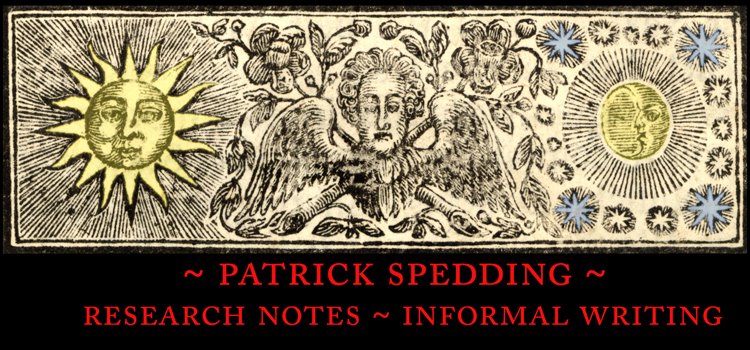Although woodblock printer’s ornaments were copied and frequently re-used in the eighteenth century—I have written a few articles and blog posts on this subject—illustrative artwork, often engraved, appears to have been less frequently copied, or has less often been the subject of book-historical studies. (And here I am excluding commonplace and expected duplication: the copying of engravings between editions or when a work was translated.) Of this type of copying, I can only think of three examples. I mentioned the first of these in a footnote in my article “Imagining Eliza Haywood,” (Eighteenth-Century Fiction, 29, no. 3 (2017): 360n45), as follows:
Although engraved plates could be “transposed from book to book” … this practice appears to have been uncommon. See Thomas Stretser, Merryland Displayed (London: J. Leake, 1741), 16: “after he [Curll] found the Pamphlet pirated, to make his differ from the pirated Editions, he adds a Frontispiece ... This Plate I find was engraved so long ago as the Year 1712, for the use of Mr Rowe’s Translation of Quillet’s Callipædia, then published by Mr. Curll, and has served for several Books since, particularly the Altar of Love, and Mrs. Singer’s Poems.”
The second example I have noticed is the close-copying of the frontispiece from the first volume of The Ladies Library. Written by a Lady. Published by Mr. Steele, 3 vol. (London: Jacob Tonson, 1714), which appears in the third volume of Eliza Haywood’s La Belle Assemblee (London: D. Browne [et al.], 1731). I did a blog post about this almost seven years ago now (here). Although I have two copies of the Haywood volume, I still haven’t picked up a cheap copy of The Ladies Library, so I haven’t been able to update that post with better images. Meh.
The third example I have noticed of this sort of re-use, set out below, is far more interesting in many ways, since it involves erotic artwork and a more varied form of re-use.
* * * * *
An engraved vignette headpiece, with a somatopic design, appears [1] at the start of the text of Little Merlin’s Cave. As it was lately discover’d, by a Gentleman’s Gardener, in Maidenhead-Thicket (London: T. Read, 1737). The design was copied twice and modified to represent “Merryland,” early and late 1741: as [2] the frontispiece to Arbor Vitæ: Or, The Natural History Of The Tree Of Life (London: E. Hill, 1741) and, reversed, as [3] a folding, engraved plate (above) in A New Description of Merryland, “Eight [sic] Edition” (Bath: J. Leake and E. Curll, [1741]).
A few explanations: a somatopia is a literary conceit, in which a utopian landscape is comprised of a human body—almost always a woman’s body. The term was coined by Darby Lewes in 2000. A New Description of Merryland was a hugely popular somatopia written by Thomas Stretser, which I have often mentioned on this blog, and which has its own Wikipedia page (here).
Below are the engraved vignette, frontispiece and folding plate, cropped and reversed (where necessary) to make the comparison easier.
Note how in [1] the recumbent female landscape exists, in 1737, in isolation; later, in [2] early 1741, an erect penis is added in the foreground; later still, in [3] considerable detail is added when the engraving was enlarged, but the view remains unchanged. Below are [1] and [2] with the changed section in a red box for ease of comparison.
At some point in the future I will do a post on Merlin’s Cave in the Royal Gardens at Richmond, created under the direction of Queen Caroline, the elaboration of grottos as sexual metaphors, and the construction of somatopic gardens more generally. For now it is enough to say that “Merlin’s Cave”—an above-ground “grotto”—was the talk of the town in London in the late 1730s. There is an excellent post on this subject, with lots of pictures, here. Omitted from the discussion is the fact that Caroline’s “grotto” was the inspiration for Little Merlin’s Cave. As it was lately discover’d, by a Gentleman’s Gardener, in Maidenhead-Thicket—and the rather naughty series of images above.







No comments:
Post a Comment